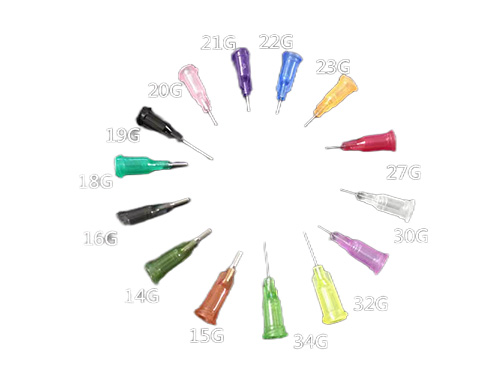NEWSINFORMATION
The Function and Application of Root Control Containers
2024-05-17 22:08:41
1. Overview
Root control containers, widely applied in gardening, agriculture, and potted plant cultivation, serve to enhance plant survival rates and ensure the growth of root systems.
Primarily composed of PET materials, these containers find application in orchards, agricultural fields, and forestry scenarios. In agriculture, they prevent root rot, in orchards, they deter insect infestations, and in forestry settings, they enhance plant survival rates. These containers not only promote robust root systems and vigorous growth but also exhibit significant advantages, particularly in the cultivation and transplantation of large seedlings, as well as in seasonal and adverse planting conditions.
2. The Role of Root Control Containers
a. Root Growth Promotion
Root control containers have a special membrane lining the inner wall, and the container's side walls are uneven, with protruding pores at the top. When the seedling roots grow outward and downward and come into contact with air (through the small pores on the side walls) or any part of the inner wall, the root tip stops growing. Then, three new roots sprout from the rear of the root tip and continue to grow outward and downward. When they encounter air (through the small pores on the side walls) or any part of the inner wall again, they stop growing, and three new roots grow from the rear of the root tip once more. This way, the number of roots increases exponentially by a factor of three, significantly increasing the quantity of short and thick lateral roots. The total root mass is increased by 20-30 times compared to conventional field seedling methods.
b. Root Control
In conventional seedling techniques, the main root tends to grow excessively long, while the lateral roots develop weakly. Root entanglement is common when using conventional containers for seedling cultivation. Root control technology promotes the development of short, thick lateral roots in large numbers while restricting the growth of the main root, thus preventing root entanglement.
c. Growth Promotion Process
Due to the dual effects of the root control container and the substrate used, the seedling root system develops robustly, storing a large amount of nutrients to meet the growth needs of the seedling during the initial planting stage. This creates favorable conditions for the seedling's survival and rapid growth. During transplantation, there is no root damage, no need for root pruning, no seasonal restrictions, and the management process is simple, resulting in high survival rates and fast growth.
3. The Use of Root Control Containers
Correct Use of Root Control Containers includes the following aspects:
a. Planting Method
When planting, create a water barrier of 5-10 centimeters high around the container, with the edges higher than the center, to facilitate water management.
The soil substrate should be a mixture of two or more types of substrates in certain proportions to ensure good air and water permeability, which is beneficial for root growth and water and nutrient absorption.
When watering, use a small amount of water and water slowly until water naturally seeps out from the bottom of the root control container, ensuring thorough penetration of water into the soil.
b. Transportation Method
When transplanting seedlings, pay attention to protecting the integrity of the root control container. Use burlap or ropes to secure the container before moving to avoid damaging it.
c. Construction and Installation of Root Control Containers
When cutting, calculate the length based on the required diameter. The length should be 3.14 times the diameter plus 10 cm for overlap.
The base plate should be inserted into the bottom of the root control container in the back row to facilitate movement.
When fixing the root control container with screws, use 2 screws for containers with a height of 30-40 cm, and 3-4 screws for containers with a height of 50 cm or more.
d. Precautions
Clean the root control container thoroughly before use to avoid affecting plant growth.
Control the water flow rate at the water inlet of the root control container to prevent waterlogging, which may affect root absorption capacity.
e. Principle and Application of Root Control Containers
Root control containers control the direction and growth rate of plant roots, allowing roots to expand within specific areas and form important distribution depth and density.
When buried in the ground, bury the root control container to a depth of about 30-40 centimeters to promote root depth and density.
By following the above methods, root control containers can be effectively used for plant cultivation, promoting healthy plant growth.
4. Summary
The advantages of root control containers include root control, warming, growth promotion, overcoming root diseases, enhancing fruit tree growth and yield, and saving land resources. Despite the many advantages of root control containers, there are also some drawbacks. For example, they are not suitable for all tree species, such as magnolias and osmanthus trees. Maintenance can be troublesome, and their use may potentially damage the ecological environment or lead to poor growth, wilting, or death of fruit trees. Additionally, the use of root control containers may affect the quality of fruit trees. In conclusion, while root control containers play a significant role in plant cultivation and protection, they also come with potential risks and limitations. Thus, reasonable selection and management should be based on specific circumstances.

XP-330-2 Seeder
It adopts electrical integration and can be started by pressing the fully automatic button ...

XP750 Seeder
The XP750 seeder has stable performance, excellent product quality, simple and convenient o...

XP-330 Seeder
It adopts electrical integration and can be started by pressing the fully automatic button ...

Needle list Seed nozzle
Needle list Seed nozzle model Different models Sowing types are different...



